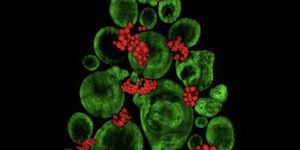There is a multitude of ways to classify life by size. One could consider mass, height, volume, or even genomic size as a parameter. But how small can life get? There are some incredibly tiny species of bacteria. One of the smallest, for example, is Mycoplasma genitalium. It acts as a parasite and lives inside the bodies of primates in a few places such as the bladder and respiratory tracts. It may be is the smallest organism that is able to replicate and grow independently; it is around 200 to 300 nanometers.
Viruses can get even smaller, but because they require a host to survive there is some debate about whether they qualify as a form of life. Some of the smallest known viruses have genomes of only a few thousand base pairs long. Viruses can save a lot of size by using the cellular machinery of other organisms instead of carrying around their own.
So how small is the smallest? Indeed, a limit of around 200 nanometers has been suggested, and seems to be holding up, so far.








